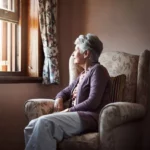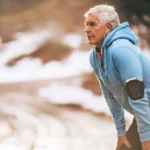What are Chilblains?
Contents
Chilblains are also known as swollen hands and fingers, or pernio, it occurs mostly in the winter season and can cause itching, red patches, swelling, on hands and feet.
It is painful inflammation, which means – swelling in the small blood vessels in your fingers after exposure to cold air.
Chilblains derive from 2 old English words “chill” ( cold ) and “Blegen” (sore) (1).
- Acute chilblains – It first occurs as the lesion and lasts less than 8 weeks.
- Chronic chilblains – It is defined as lesions lasting at least 8 weeks.
Anyone can get chilblains, but they are most commonly seen in women. Most of the time it goes away on its own without any treatment.
In some cases, it can get on your face and legs, too.
Causes of swollen hands and toes fingers
The common cause of swollen hands and fingers is – cold season or damp air, due to which there is swelling in the small veins of the fingers.
The cold makes tiny blood vessels on your fingers get smaller. This stops blood from moving around, which can cause pain, redness, and swelling.
Here are some other potential causes of chilblains. which include:
- Genes
- Hormonal changes
- Some underlying disease
- Barefoot walking on a cold floor
If it happens to you every year, it can also be triggered by small things including:
- Barefoot walking on a cold floor
- Do not keeping fingers hot
- Exposed to the ice water bath
NOTE: However, there is no exact or specific reason for chilblains.
Signs
Chilblains are most commonly seen in the toes finger, And they can stay for 1 to 3 weeks.
Here are the common signs and symptoms. They include:
- A burning sensation on the skin
- too much Itchy
- Redness on the fingers
- Swelling
- Pain
- changes skin color from red to dark blue
- In some cases, blisters or skin ulcers
- Possible seconday infection
According to researchers, 71.2% of the patients complained of itching, 51.6% of pain, 31.3% of burning, 6.2% of numbness, 6.1% of stinging in the lesions every winter season.
Who might get more chances to Chilblains?
Females are more chances to get chilblains, compare to men. but there are some peoples who are getting more chances to chilblains. are:
- sensitive to weather and temperature
- elder people
- teenagers
- If it happens to you every year, then you have more chance of getting chilblains.
Risk
Here are some risk factors or if you come to these following conditions, then the contribution of chilblains is increased. They include:
- Poor circulation
- Anemia
- Nutrition deficiency
- A family history
- Smoking
- Hormonal changes
- Environement and temparture – Your risk of chilblains is higher if you live in an area with high humidity and cold, but not freezing, temperatures.
- Being female
- Underweight
Your risk of getting chilblains also increases if you have:
- Bone marrow disorders, such as chronic myelomonocytic leukemia (CMML)
- Systemic lupus erythematosus – Is an autoimmune disease.
- Having lupus
- Raynaud’s phenomenon – In this condition, the blood flow to the fingers is reduced.
- Peripheral arterial disease – It is a common circulatory problem, In this, the blood vessel brings less blood to the limbs.
Evaluation of body mass index (BMI) as a risk factor for the development of chilblains.
Treatment
In most cases, it goes away on its own, when climate change, and as long as you avoid cold or damp weather conditions.
If you face too much itchy, and burning sensation, then the doctor may prescribe your some medicines, or cream, that reduce inflammation and soothe pain or itching.
Blood pressure medication treats chilblains by helping to open up blood vessels and improve circulation (2)
If you see blisters on your fingers, then keeping your skin moisturized and clean, doing so reduces the risk of infection.
But if you have diabetes and poor blood circulation, then it may take time or not heal well.
NOTE: If your symptoms may last more than 3 weeks and are painful, then consult the doctor, it may an underlying condition.
Home-Remedies
Use these home remedies to ease your signs and symptoms including:
Turmeric and oil
- Take one tablespoon of mustard oil, then put a half teaspoon of turmeric in it
- Warm the mixture of these two ingredients, and apply it to your fingers.
- Do this for 5 days, for best result.
Covid toes and chilblains
According to the research published by the British journal of dermatology, shown that some corona patients also show chilblains-like symptoms on their skin.
NOTE: During this research, 19% of covid patients were seen swollen, sores, blisters on their feet and hands fingers.
This is a symptom of covid which has been named as covid toe.
It has also been seen that such patients do not even have pain in the fingers of the feet and hands.
The covid toes that occur in covid-19 look like chilblains, and can also appear on both hand and toes fingers (3).
Learn More – Is Omicron End In 2022? And More Information On New Varient
Things that keep in mind
- Keep your fingers warm, by wearing warm clothes or blankets. Also keep your body temperature warm, which helps in increasing blood circulation.
- Use moisturizer your fingers with lotions, cream, etc.
- Make sure affected areas remain clean.
- Avoid rubbing, and massaging that area
- Exercise that keeps you improving blood circulation, which will keep your body warm.
- Resist the urge to scratch, as this will further damage the skin.
- Put a cloth in warm water and apply it your fingers.
NOTE: Remember not to apply very hot water directly to the affected area. this can make symptoms worse.
When to talk to the doctor?
If you experience any discomfort, then talk to the doctor. Also here are some other situations.
- If it doesn’t go away on your own after 3 weeks
- chilblains in diabetes patients
- pus coming out of your skin
BOTTOM LINE
The cold makes tiny blood vessels on your fingers get smaller. This stops blood from moving around, which can cause pain, redness, and swelling.
Avoid rubbing, and massaging that area, And use moisturizer your fingers with lotions, cream.
Anyone can get chilblains, but they are most commonly seen in women. Most of the time it goes away on its own without any treatment.



